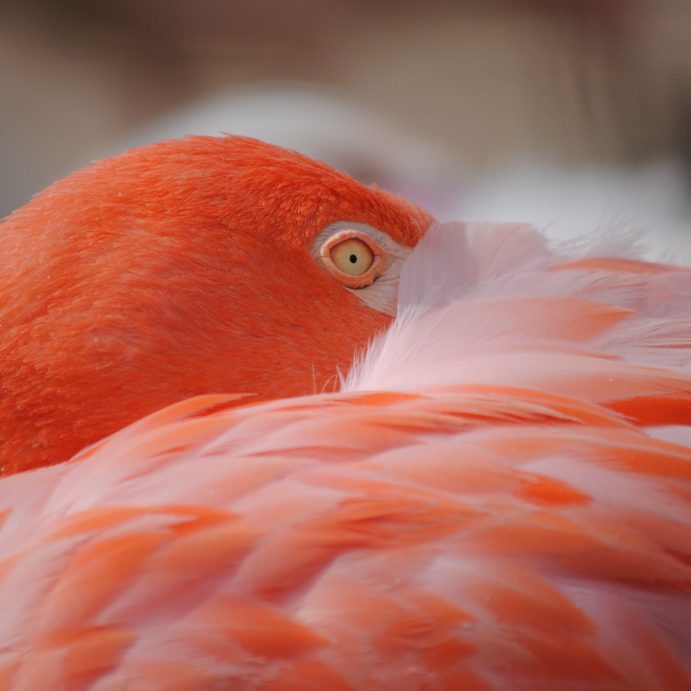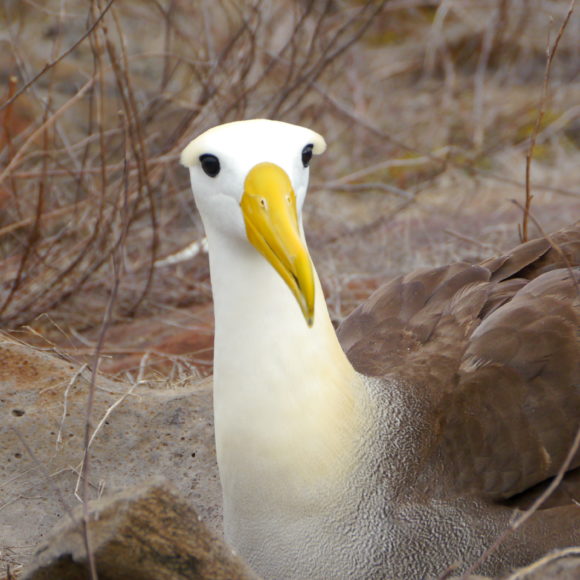The Galapagos Animal Paradise
FIND YOUR PERFECT TRIP
Step into the animal kingdom in the Galapagos!
As the animals on the Galapagos Islands have never been hunted by humans, they did not develop the fear nor the instincts to run away from us. This is one of the only place left on earth where humans and animals can interact and live harmoniously together. Therefore priority is given to the protection and conservation of wildlife and nature on the Galapagos Islands.
The Galapagos Islands are situated at the equator at around 940 kilometres from the Ecuadorian coast with 19 large main islands and 100 smaller islands. 97 percent of the land area and 99 percent of the surrounding water bodies of the Galapagos Islands are national parks which are regulated under strict environmental protection laws. The islands are formed by ongoing seismic and volcanic activity which spread across 120,000 km² of the ocean with 8000 km² of land area. The islands in the archipelago like Fernandina Island are relatively young as compared to other oceanic islands with high levels of volcanic activity. San Cristóbal Island located in the east is only 4 million years old, while submerged underwater islands in the archipelago are estimated to be around 5 to 14 million years old. Some of the species found on the islands have ancestors dating back to 3 to 4 million years while only five islands are inhabited.
The Untouched Nature of the Galapagos Islands
Up to 95 percent of the Flora and Fauna on the Galapagos Islands are untouched in their natural state. With the introduction of tourism in the 1970s to the Galapagos Islands, more measures and efforts are in place to ensure the protection of this precious ecosystem. For example, in 1959, the islands were established as national parks and it was listed under UNESCO World Heritage sites since 1978. The water body around the Galapagos Islands is also a wildlife sanctuary that is protected under the Galapagos Marine Reserve.
Check out our list of monthly animal activities and climate in the Galapagos Islands below!
The Works of Evolution
After visiting the Galapagos Islands in September 1835, Charles Darwin developed his theory on The Origin of the Species. Even today, visitors can still feel the influence and legacy left behind by Darwin. For example, the different shapes and patterns of tortoise shells on different islands would allow visitors to witness the works of evolution first hand!
There is no place on earth like the Galapagos Islands where you can come into such close and immediate contact with its fascinating wildlife. Is it a common sight to see sea lions lounging on park benches while penguins rest and relax on beaches even with humans nearby. Divers can enjoy swimming with all kinds of sea creatures and even sharks. So join our Galapagos Islands tour and let us bring you to this paradise on earth!
Monthly Animal Activities
JAN


30°C /86°F
23°C / 73°F
The rainy season begins as water and air temperatures remain warm until June, hence the perfect time for snorkeling. Birds begin to nest while sea turtles nest on the Galapagos beaches. The adult male marine iguanas on Española Island and Isabela Island turn colourful during the breeding season.
FEB


30°C / 86°F
25°C / 77°F
Flamingos on Floreana Island and marine iguanas on Santa Cruz Island begin to nest.Masked boobies breeding season on Española Island is ending while some penguins can be sighted on Bartolomé Island. Galapagos white-cheeked pintails as well as the Galapagos doves begin their breeding season.
MAR


31°C / 88°F
25°C / 77°F
The highest amount of rainfall occurs in this month and intense heat is to be expected. Marine iguanas nest on Fernandina Island and the beginning of the summer equinox signals the arrival of albatrosses on Española Island.
APR


31°C / 88°F
25°C / 77°F
Witness the amazing Galapagos Albatrosses courtship rituals on Española Island. The breeding season for the Galapagos giant tortoise is ending and both sea turtles and iguanas eggs are hatching. Good water visibility and temperature for snorkelers during this time and is one of the busiest months for various wildlife activity!
MAY


27°C / 81°F
23°C / 73°F
Blue-footed boobies begin their courtship rituals on North Seymour Island and Sea turtles are still hatching, Gardner Bay, Punta Cormorant and Puerto Egas. Most marine iguanas are hatching on Santa Cruz Island while the Galapagos albatrosses lay their eggs on Española Island. The Madeiran storm petrels begin their breeding season.
JUNI


26°C /79°F
23°C / 73°F
Galapagos giant tortoises on Santa Cruz Island migrate from the highlands to the lowlands to nest.Waves and currents are stronger and male frigatebirds on North Seymour Island inflate their red gular pouches to attract potential mates. Southern migratorybirds flying northward stopover in Galapagos while some whale species such as the humpback whales also reach the Galapagos.
JULY


26°C /79°F
22°C / 71°F
Marine birds are very active especially the blue-footed boobies on Española Island.The Galapagos cormorants also perform beautiful courtship dances and nesting activities on Fernandina Island. The American oystercatchers nest on the shores of Puerto Egas on Santiago Island. Lava lizards begin their mating rituals.Possible sightings of the Cetacean (whale) and/or dolphin are frequent, particulary at the west coast of Isabela Island.
AUG


26°C /79°F
20°C / 68°F
Galapagos hawks mate on Española and Santiago Islands while the Nazca boobies and swallow-tailed gulls nest on Genovesa Island. The Galapagos giant tortoises return to the highlands and the sea is very choppy with strong water currents. Newborn sealion cubs can be seen on western and central islands.
SEP


26°C /79°F
21°C / 70°F
This is the coldest month of the year and the Galapagos penguins show remarkable activity on Bartolomé Island. Swimmers and snorkelers can watch the penguins swim torpedo-like underwater. Sea lions are very active as the females are ready to mate, and the males react by banding together in groups or fighting with one another. Most marine birds are busy building their nests or nesting in it.
OKT


26°C /79°F
22°C / 71°F
Galapagos herons begin nesting until March.The Galapagos fur seal begins its mating season and blue-footed boobies can be seen raising their chicks on Española Island and Punta Vicente Roca. You can still watch several turtles lay their eggs on the beaches.Most places are foggy except for the western islands.
NOV


26°C /79°F
22°C / 71°F
Sea lions continue to look after their new born cubs and are also sexually active in the eastern areas of the islands. It is the breeding season for the noddy. Some species of jellyfish like the genus Physalia is often seen floating around Gardner and Tortuga Islands or on Flour Beach in Floreana Island. Madeiran storm petrels also begin their second nesting period while sea lion pups enjoy performing water aerobics alongside snorkelers.
DEC


27°C /81°F
24°C / 75°F
The Galapagos giant tortoise eggs begin to hatch until April. The green sea turtles display mating behaviour and the first young Galapagos albatrosses leave their nest. The weather is largely sunny without strong winds while the first inflated red gular pouches can be seen on the great frigate birds on Genovesa Island.The northern migratory birds as well as whales have started their journey southward with a stopover in the Galapagos Islands.